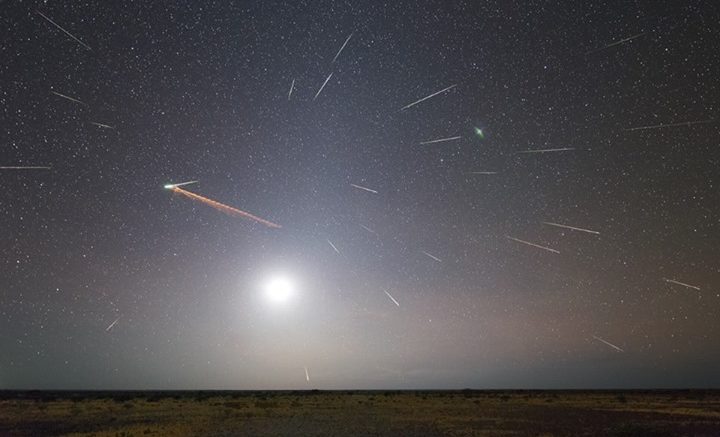Eta Aquarids Quick Facts
Meteor Shower Dates: April 19 – May 28
Peak Dates: ~ May 6th
Peak Meteor Showers: ~55 under perfect conditions*
Best Viewing Times: At night after moonset, but before dawn
Originating Constellation: Aquarius
Summary
The Eta Aquarids is an above average shower, capable of producing up to 60 meteors per hour at its peak. Most of the activity is seen in the Southern Hemisphere. In the Northern Hemisphere, the rate can reach about 30 meteors per hour. It is produced by dust particles left behind by comet Halley, which has known and observed since ancient times. The 2019 peaks occur on the night of May 6 and the morning of the May 7. The nearly full moon will be a problem this year, blocking out all but the brightest meteors. But if you are patient, you should still should be able to catch a few good ones. Best viewing will be from a dark location after midnight. Meteors will radiate from the constellation Aquarius, but can appear anywhere in the sky.
The shower is visible from about April 19 to about May 28 each year with peak activity on or around May 5. Unlike most major annual meteor showers, there is no sharp peak for this shower, but rather a broad maximum with good rates that last approximately one week centered on May 5. The meteors we currently see as members of the Eta Aquariid shower separated from Halley’s Comet hundreds of years ago. The current orbit of Halley’s Comet does not pass close enough to the Earth to be a source of meteoric activity
The Eta Aquarids get their name because their radiant appears to lie in the constellation Aquarius, near one of the constellation’s brightest stars, Eta Aquarii. The shower peaks at about a rate of around a meteor per minute, although such rates are rarely seen from northern latitudes due to the low altitude of the radiant.
The Eta Aquarids are best viewed in the pre-dawn hours away from the glow of city lights. For northern observers, the radiant of the shower is only above the horizon for the few hours before dawn, and early-rising observers are often rewarded with rates that climb as the radiant rises before sunrise.

Be the first to comment on "Eta Aquarids Meteor Shower"